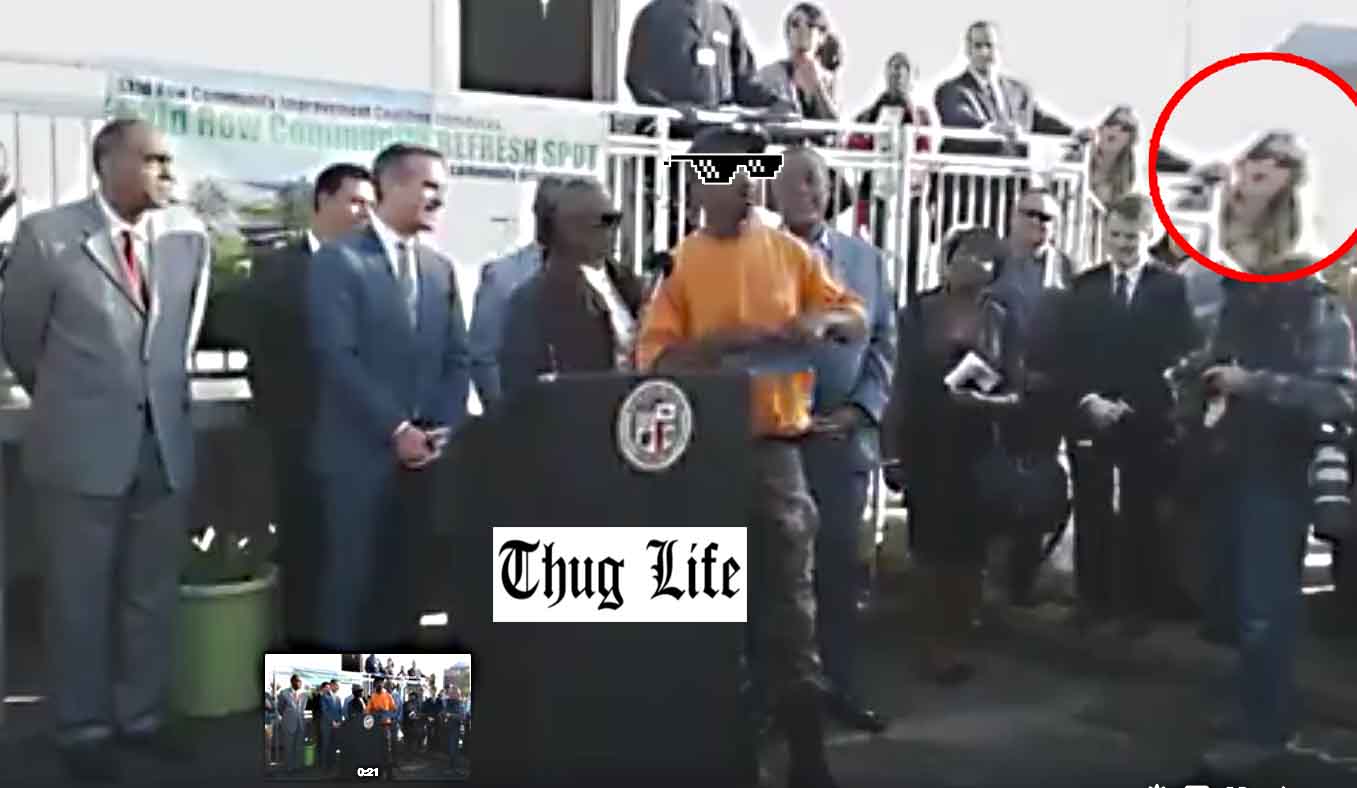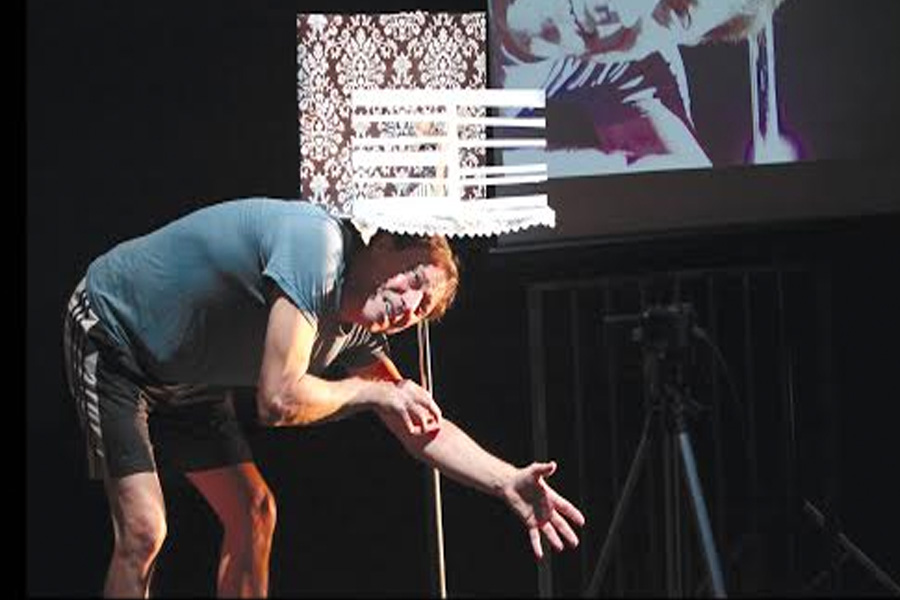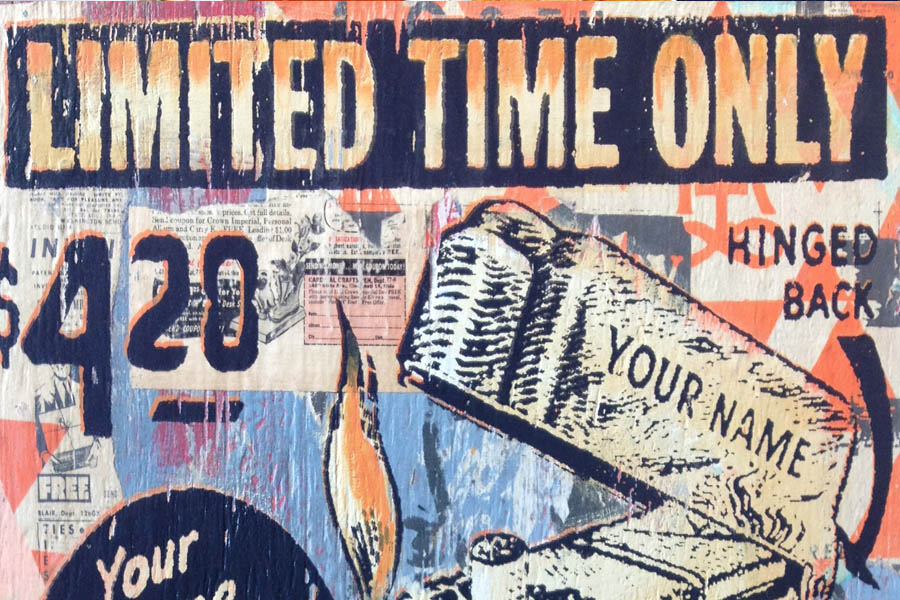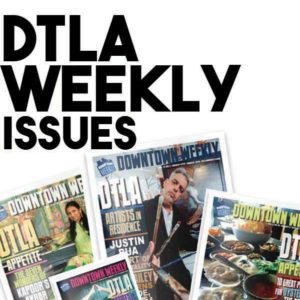
The Dirty Divide (2013): A Call for Public Health Equity in Skid Row
“As a 30-year resident of Downtown LA, I’m seriously concerned about the growing inequality between the new Downtowners and long-term Skid Row residents,” said low-income resident and LA CAN member, James Porter. “They complain about the trash, but refuse to give us trash cans. They put in automated restrooms, but they’re always broken. We’re not going to stand for this anymore.”
Introduction
For many years, members of the Los Angeles Community Action Network (LA CAN) and other Skid Row residents have raised concerns about the lack of trash cans and trash collection, as well as lack of access to public restrooms, in their community. While there has been some progress on these issues over the years, including the installation of five automated, self-cleaning restrooms, increased trash collection at times, and resident-led initiatives to clean sidewalks and streets, the problems still exist. The concerns about lack of trash and restroom services are connected to three key issues: 1) the public health of Skid Row residents should be protected; 2) equity in services between the “New Downtown” and Skid Row should be upheld; and 3) without access to trash cans and restrooms, Skid Row residents are at risk of criminalization under the Safer Cities Initiative which focuses on low-level offenses such as littering or public urination. A 2012 County of Los Angeles Department of Public Health report highlighted these exact issues, which supported long-time resident demands. Yet almost one year later, the City has yet to implement the recommendations in this report to expand trash cans/collection and improve and expand restroom access. LA CAN’s Civil Rights Committee created this report to highlight the public health equity issues raised in the County report, document current conditions, and make community-based demands to permanently solve these ongoing problems. Lastly, due to recent misinformation in the media and within the community about the cause and spread of Tuberculosis (TB), we note that the public health equity issues addressed in this report are unrelated to TB. LA CAN is active in ensuring the community has the information it needs to understand TB and the Department of Public Health’s services and plans to prevent the spread of TB. LA CAN also is working to debunk the myths that were widely spread during the TB media hype. Most importantly for this report, the existence of dirty restrooms and lack of restrooms do NOT cause or spread TB. Additionally, though City officials often equate trash and people’s personal belongings – this is not true and neither cause nor spread TB. However, current trash and restroom conditions do create other public health equity concerns that demand government and community response. Background On May 21, 2012, the County of Los Angeles Department of Public Health [DPH], at the request of the City of Los Angeles, released a report highlighting the severe water and sanitation shortcomings faced by Skid Row residents. The timing of the report was highly suspicious and politically charged due to the City’s ongoing efforts to blame homeless residents for health and safety issues as justification for illegally seizing and destroying their property. However, the report was welcomed by community residents who have long organized to improve the health of low-income and homeless residents in Downtown Los Angeles. Although DPH did not address the core issue of housing that is the most pressing concern of most residents, their recommendations aligned with the basic public health services that residents have been demanding for years. Unfortunately, after an initial flurry of activity, many of the recommendations in the report seem to be forgotten or ignored, especially those related the longstanding need for trash cans, trash collection, and improved and expanded public restroom access.
The DPH findings were divided into six categories: Threat to Immediate Public Health, Safety Hazards, Vermin Control, Solid Waste Disposal, Communicable Disease Risk, and Non-Public Health Observations. Each category listed findings, corrective actions required to remove the violations, and recommendations to prevent the violations in the future. The recommendations were generally stronger than the Corrective Actions and more in line with the true needs of the community. Nonetheless, only the Corrective Actions carried enforcement obligations and the level of long-term enforcement remains to be seen. Residents’ ongoing concerns that were documented in the DPH report included the inadequate numbers of public restrooms, the absence of soap and water in the restrooms that are available, and the dearth of trash cans and trash collection.
DPH recommended that the City, among other things, “Provide additional public toilets particularly on San Julian, San Pedro, and Crocker Streets”, and “Provide an adequate number of trash bins with frequent, as needed disposal to prevent the accumulation of trash and debris on the sidewalk.” To date, the City has done neither. While DPH has certified that the City addressed some of the issues in their report, most of the recommendations offered in the report have yet to be implemented. Until action is taken, violations to the human right to water and sanitation continue to persist; public health inequities exist, the risk for disease and health concerns related to lack of sanitation remains high, and downtown’s poorest residents are allowed to live in hazardous conditions in full knowledge of those duty bearers elected and hired to represent them. These issues and their relatively simple solutions should be cause for concern and action among all downtown residents, wealthy and poor. Human Rights Implications
The United Nations offers a strong framework that can be utilized when discussing the moral and legal imperatives connected to the rights of homeless and poor residents of Downtown. Skid Row is high on the list of places where human rights and civil liberties are forgotten or cast aside in favor of criminalization and banishment. Since 2006 the Skid Row community, through the work of LA CAN, has taken part in a number of official United Nations investigations. The Special Rapporteur on contemporary forms of racism, racial discrimination, xenophobia and related intolerance, Doudou Diène, documented in his 2008 report:
In addition, relations between law enforcement and homeless persons were also highlighted as an important problem, particularly with regard to the enforcement of minor law enforcement violations which often take a disproportionately high number of African American homeless persons to the criminal justice system.
Soon after, the Special Rapporteur on the Right to Adequate Housing visited the Skid Row community during her investigation of the United States. The recommendations in her 2010 report included: The Interagency Council on Homelessness should develop constructive alternatives to the criminalization of homelessness in full consultation with members of civil society. When shelter is not available in the locality, homeless persons should be allowed to shelter themselves in public areas.
The human right to water and sanitation entitles everyone to water and sanitation that is available, accessible, affordable, acceptable and safe without discrimination. During her 2011 United States investigation, Catarina de Albuquerque, UN Independent Expert on the Right to Water and Sanitation, uplifted the principles offered by the Universal Declaration of Human Rights and various treaties. She visited a number of US localities including a homeless encampment located along the American River Parkway in Sacramento. There were stark similarities of the conditions faced by homeless residents along the river to poor residents in Skid Row. For example, bathrooms were closed and locked at night; aggressive enforcement of anti urination and /or defecation ordinances; strict prohibition of camping and storage of personal property; and potable water sources were taken away and destroyed, and attempts to erect substitute systems of sanitation were criminalized. Her report included the following findings and recommendations:
The people with whom the independent expert met and who are facing obstacles in their enjoyment of the rights to water and sanitation were disproportionately Black, Latino, American Indian, homeless or otherwise disadvantaged. More concerted efforts are required to ensure targeting of policies and programmes to reach the hidden and poorest segments of the population. Problems of discrimination in the United States water and sanitation services may intensify in the coming years with climate change and competing demands for ever scarce water resources. Ensuring the rights to water and sanitation for all requires a paradigm shift towards new designs and approaches that promote human rights, that are affordable and that create more value in terms of public health improvements, community development, and global ecosystem protection. Ensure that all municipalities provide access to safe drinking water and sanitation to homeless people, including through ensuring the opening and regular maintenance and upkeep of public restrooms, as well as availability of public water fountains, including during the night.
As the nation’s “homeless capital” Los Angeles must pursue measures that move in the direction of adhering to human rights standards including the recommendations cited above, not in an opposite path. Dear Sir, Can You Spare A Bathroom Please? The Skid Row community has long struggled to secure public amenities that guarantee a measure of decency as well as mitigate potential individual and community health risks. Unlike their more affluent neighbors in the western parts of Downtown who have adequate trash cans and ample access to restrooms and water, Skid Row residents have a dearth of these items. Ironically, Skid Row residents are deprived of these basic necessities under the guise of “public safety.” The rhetoric of the state, in regards to basic sanitation, has become a message shrouded in criminal behavior and intent. Restrooms have been characterized as “havens for criminals” to justify their removal. At the same time, homeless and poor residents are criminalized for things like public urination. The LAPD has been the main perpetrator of criminalizing basic human behavior, and numerous City representatives including LAPD have actively opposed efforts to increase restroom access – violating basic human rights. During her Sacramento investigation, UN expert Catarina de Albuquerque was very clear on the contradictions presented by such a strategy:
The criminalization of life-sustaining behaviors of homeless persons in public spaces, such as sleeping, camping or public urination and defecation, in a context of lack of adequate shelter alternatives, has the potential to impede the enjoyment of human rights by poor and vulnerable groups, including the right to an adequate standard of living. The criminalization of public urination and defecation combined with a lack of public toilets leaves the homeless people in a desperate situation and without alternatives.
The City of Los Angeles has failed miserably when it comes to providing accessible and clean public restrooms, thereby creating and maintaining the human rights violations cited in this report and others. The perspective of Los Angeles duty-bearers has been to not make it too comfortable for homeless persons, under the illogical and unsubstantiated premise that people choose to be homeless, at the expense of public health, human rights, and basic humanity. It is an obvious fact that human beings simply must relieve themselves regularly. All residents face the need for public restrooms, it’s just that homeless residents are entirely reliant on public options. When viewed through a gender lens, there is also a disparate impact on women in the lack of restrooms as described by sociologist Harvey Molotoch in his article, “peeing in public”:
Women in places like the United States—and this is not a new point—routinely face more limited provisions than men when, in fact, their needs are greater. Besides the obvious biological differences, women are more likely to be caring for children, the old, and the physically challenged—all of which adds demand to the women’s room.
Also forgotten by Los Angeles duty-bearers in their lack of action to resolve restroom access issues are elderly residents that need more frequent access to restrooms and residents with disabilities who need accessible restrooms and may need other reasonable accommodation. Current Conditions in Existing Restrooms Additional restrooms are definitely needed, but the existing restrooms must also be improved. The DPH report classified the need to remove debris and trash and provide soap in the City maintained toilets as a “Threat to Immediate Public Health.” However, the Corrective Action listed on the Official Notice of Violation [NOV] simply stated, “Remove and dispose of all animal and human feces on sidewalks, streets and storm drain outlets. Properly clean and sanitize all areas affected by feces and urine.”
This Corrective Action is much needed, but ignores the serious public health issues created by inaccessible and/or dirty restrooms and lack of soap and water for hand cleaning—which currently remain public health issues in Skid Row. Residents are left to face the existing conditions in restroom facilities, including substandard conditions and the random and unannounced locking of the few existing facilities. During January and February 2013, residents conducted random spot investigations of the five existing automated restroom facilities in the Skid Row restrooms in the community. Between January 7 and February 9, 2013, seven trained LA CAN members made 147 visits to restrooms between 5:45 AM and 11:00 PM and documented conditions of each visit on worksheets. In only 32% of the visits were the restrooms open, clean and equipped with supplies. The results are summarized in the two charts on the following page.
Condition of Restroom in 147 Visits
32% 24% Not In Service In Service, but substandard In Service, clean and with supplies
44%
Reason Substandard (in 65 of 147 visits)
25%
26%
Dirty, No Water and No Toilet Paper Dirty and No Toilet Paper No Toilet Paper and No Water
3% 17% 4%
25%
No Toilet Paper No Water Dirty, but had Supplies
We’re Not Trash, But We Need Trash Services! As referenced throughout this report, the City of Los Angeles has long played dangerous games with the health of Skid Row residents. Over a number of years, Los Angeles has led efforts to remove trash receptacles, porta-potties and just about anything else that could provide a bit of humane comfort to those marginally housed. In addition to the basic issue of lack of trash cans and trash collection, homeless people’s property has often been characterized and treated as trash – adding insult to injury. The LAPD has employed a strong-arm approach, basically treating all possessions of homeless residents as trash, thereby illegally seizing and destroying it. Therefore, the issues of “trash” in the Skid Row community have been seen as more complex than they need to be. The solution is actually very simple: people’s property can and must be protected while also providing receptacles and collection for actual trash.
Despite the efforts of LAPD, as well as the City Attorney and Business Improvement Districts, to illegally confiscate and destroy people’s belongings as if they were trash, federal courts have consistently reinforced Constitutional protections on personal property. Most recently, in June 2011, Judge Gutierrez issued a preliminary injunction that gave the City of Los Angeles clear instructions to stop illegally taking personal property while also providing mechanisms to respond to health and safety issues related to property. Unfortunately, the City of Los Angeles, instead of immediately complying with the court order, stopped picking up any trash at all and moved to fight against the ruling. The City’s public messaging equating personal property and trash, as well as disregard for constitutional rights of homeless people, was widespread and disturbing. While appealing the preliminary injunction in the 9th Circuit Court of Appeals, the City’s position on human and civil rights became abundantly clear. During oral arguments, Los Angeles City Attorney Amy Fields stated, “I’m not conceding that they [homeless people living in skid row] have a constitutionally protected property right. In fact, that’s my point…that they don’t.” The City has refused to accept that their appeal was denied, and in March 2013 even escalated their efforts to petition the U.S. Supreme Court to take up the appeal. The use of City resources to establish that, in fact, the City believes that homeless people simply do not have the same constitutional rights as housed residents is both shameful and wasteful. LA CAN members involved in this case will continue to fight to protect the rights of all.
Although the City continues to equate personal property and trash, as well as challenge homeless residents’ constitutional property rights, the issue of trash collection is actually entirely separate from that of personal property. Long abandoned by duty-bearers on the issue of basic trash collection, Skid Row residents have organized broad-based campaigns and self-help initiatives to alleviate the conditions caused by limited trash collection. Over the years LA CAN has campaigned aggressively to ensure basic measures of public health infrastructure, including trash collection, exists in Skid Row. Delegation visits to responsible Council offices led by impacted persons; participation in numerous community meetings; and a community watch program to ensure impacted persons rights are protected and not violated are but a few of the ways LA CAN have organized. Other organizations and residents have also been active in the efforts to keep our community clean and ensure equity in trash collection.
For example, OG’s N Service has for years deployed clean-up teams with brooms and trash cans to make the community more presentable. Even in the face of adversity, such as their trash cans being removed by BIDs, OG’s N Service has never strayed from its mission. This indigenous effort has enlisted the support of the entire community and demonstrated the desire for clean streets. Additionally, residents in encampments routinely clean their areas with personal brooms and dustpans bagging trash or piling it in a common area for city pick-up, in the event that trash pick-up actually happens. The DPH report found what residents have been arguing for quite some time: that there were not enough trash cans in skid row, nor adequate trash collection, to accommodate the community. The report recommended the City, “Provide an adequate number of trash bins with frequent, as needed disposal to prevent the accumulation of trash and debris on the sidewalk.” In response to this recommendation, the City of Los Angeles placed an additional five trash cans in the inspected areas. But shortly thereafter the trash cans were removed by the City and have yet to be replaced.
Access to trash services is also an equity issue. Residents of skid row have long pointed to the contradictions that exist between the treatment of affluent versus poor downtown residents. Not missed by poor residents is the fact that even basic necessities, like trash cans, are a struggle for them while their neighbors and even their neighbor’s dogs are provided for substantially. Community demands have, quite frankly, fallen on deaf ears with duty-bearers choosing to look the other way. In January 2013, four trained LA CAN leaders conducted a walking survey documenting where trash cans exist in neighborhoods within Downtown LA, and, more importantly, where they do not. The map below illustrates the results of the visual documentation of trash cans in the Historic Core, City Center, and Skid Row neighborhoods of Downtown Los Angeles. The green dots illustrate City-owned or Historic Core Business Improvement District receptacles and the red dots are receptacles owned by the Central City East Association.
As the map demonstrates, in the “Historic Core” of Downtown, there are as many as nine trash cans per block. In and around the Civic Center/City Hall section of Downtown, there are up to 15 trash cans in one block. In Skid Row, there is a maximum of four trash cans per block with several blocks having no trash cans at all. Crocker, Towne and Stanford Streets between 4th and 7th Streets have no trash cans disbursed along the streets, with just a few at the corners. These streets are historically among the most populated by homeless residents and where some of the most intensive LAPD activity is focused. The only exception for trash can equity within Skid Row is on San Pedro, between 4th and 5th Street, which has nine trash cans. Probably not coincidentally, this block is home to the only market-rate loft development in Skid Row. This unequal distribution is indeed discriminatory and cuts firmly across race and class lines. It also illustrates that the City’s public health resources like trash cans and collection in Downtown are prioritized for those with higher incomes.
Recommendations Human rights require a focus on the most vulnerable, those who are most often excluded from processes and resources. Often, these people are characterized as the most difficult to reach or serve, but this cannot be a justification for neglecting them – on the contrary. To eliminate human rights violations in practice, special attention must be paid to groups of individuals who suffer historical or persistent prejudice instead of merely comparing the treatment of individuals in similar situations. In order to respond to the human rights violations outlined in this report and begin to ensure public health equity, LA CAN recommends the following actions. 1. Shift current political and governmental priorities and resources from criminalization to housing. There is only one way to truly mitigate the lack of infrastructure needed to keep houseless residents healthy—provide safe, accessible and affordable housing for all. The morally bankrupt and unsustainable use of the LAPD as a response to homelessness is both costly and violates human and civil rights. The immediate reprioritization of funding and other resources from enforcement to housing is a crucial step in securing permanent housing for houseless residents. 2. Place adequate numbers of trash receptacles in Skid Row. The map created for this report illustrates an alarming reality—people with fewer means do not have equitable levels of service. The map demonstrates inequity in trash services for low-income residents in Downtown, particularly African Americans.
It also is an example of the apartheid-like “dividing line” of Main Street – where those west of the line are prioritized and served by the City and those east are further disenfranchised. Trash cans are but a symptom of a larger caste-like system that is currently in place. Between 4 and 8 trash cans per block should be added throughout the entire Skid Row community, starting on Crocker, Towne and Stanford Streets, and should be the type that includes ash trays.
3. Frequent trash collection in Skid Row. Residents that live indoors and outdoors accumulate trash. Residents unfortunate enough to live on city streets have few means of properly disposing of their garbage. Residents routinely clean this community and their areas but need an adequate collection of this trash. The employment of residents and resident organizations to fulfill some trash disposal activities should also be explored. Additionally, cleaning supplies and environmentally-safe disinfectants should be given to area residents.
4. Immediately increase the number of restroom facilities available to residents. Highlighted as a Threat to Immediate Public Health by DPH, the installation of at least double the number of existing toilets should be implemented immediately. Now is not the time for continued excuses for not increasing restrooms —deteriorating health conditions make none of us safer. Additionally, all existing and new toilets have to remain open 24hours per day and not be locked at sundown as routinely occurs. A person’s restroom needs do not stop working after sundown, so neither should the restrooms.
5. Frequently clean Skid Row restrooms and ensure toilet paper, soap and hot water are available. As our report highlights restrooms are routinely not open or are functioning at substandard levels. The automated cleaning function on the self-cleaning toilets appears to be in need of repair and better monitoring. If the self-cleaning function is not sound, other steps need to be taken to ensure regular cleaning. Also, toilet paper and soap need to be routinely refreshed or made available.
Lastly, the number of hand sinks for local residents need to be increased exponentially. At a minimum, hand wipe dispensaries should be installed throughout skid row as a temporary stop-gap measure.
6. Provide potable water sources for Skid Row residents. It’s important that fresh water is provided for skid row residents.
Temporarily, water stations should be established for drinking but in the long term, water fountains have to be installed in numerous locations. Significant consideration has been given to the water needs of downtown’s canine population—new parks have been outfitted with drinking fountains for pets. It is imperative that the needs of human beings are met as well.
7. Install Hygiene Centers at local parks or other accessible locations. Public hygiene centers that include access to restrooms, showers and potable water should be installed at both of Skid Row’s public parks and other accessible locations. Assembly Bill 5, recently introduced by Assemblymember Tom Ammiano, would require localities to provide these basic services. Given the overwhelming need in LA, we should not wait for a state requirement, but act now. 8. Develop a community health council to address issues for the long-term. Residents and volunteers have long attempted to find ways to address the lack of public sanitation infrastructure in Skid Row.
Their experiences and innovations should be the foundation of any plan to improve public health equity. Representatives should include residents, health care professionals, appropriate public agencies, elected officials’ staff, neighborhood council representatives, and other interested parties.
Sources: 1. DPH Report of Findings‐Request From the City of Los Angeles To Address Public Health Issues In The Skid RoArea of Los Angeles, May 21, 2012
2. RACISM, RACIAL DISCRIMINATION, XENOPHOBIA AND RELATED FORMS OF INTOLERANCE, FOLLOW‐UP TO AND IMPLEMENTATION OF THE DURBAN DECLARATION AND PROGRAMME OF ACTION, United Nations April 28, 2009
3. PROMOTION AND PROTECTION OF ALL HUMAN RIGHTS, CIVIL, POLITICAL, ECONOMIC, SOCIAL AND CULTURAL RIGHTS, INCLUDING THE RIGHT TO DEVELOPMENT, United Nations, February 12, 2010 4. UN Independent Expert on the right to water and sanitation: Mission to the United States of America from 22 February to 4 March 2011 5. Culture Reviews, Harvey Molotoch, “Peeing in Public” Spring 2008 6. An audio recording of Ninth Circuit Court of Appeals, Preliminary Injunction Appeal Hearing, Lavan v. City of LA 7. LA CAN participatory research documentation 8. Interviews and discussions with Skid Row residents











